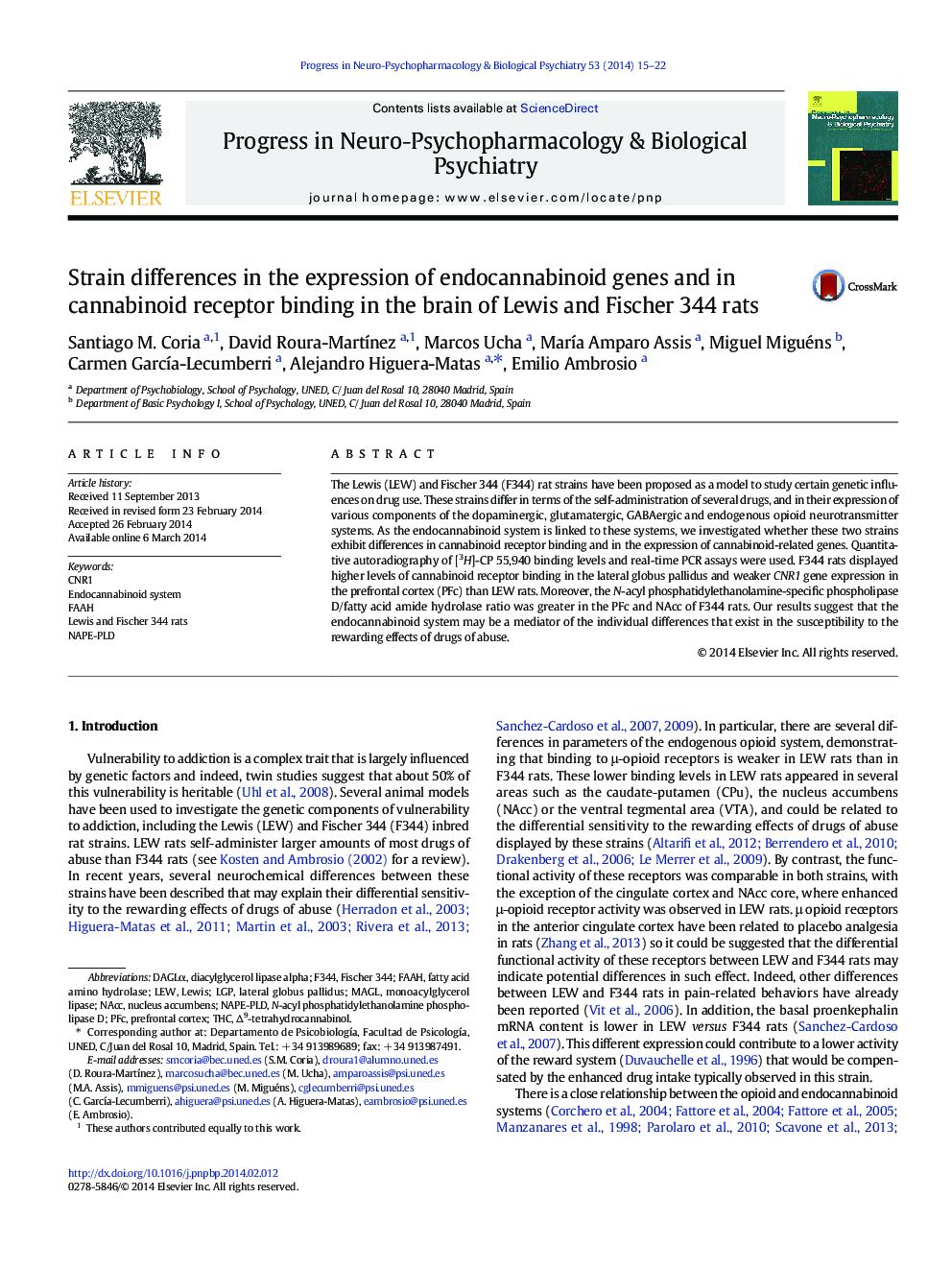| Article ID | Journal | Published Year | Pages | File Type |
|---|---|---|---|---|
| 5844421 | Progress in Neuro-Psychopharmacology and Biological Psychiatry | 2014 | 8 Pages |
Abstract
The Lewis (LEW) and Fischer 344 (F344) rat strains have been proposed as a model to study certain genetic influences on drug use. These strains differ in terms of the self-administration of several drugs, and in their expression of various components of the dopaminergic, glutamatergic, GABAergic and endogenous opioid neurotransmitter systems. As the endocannabinoid system is linked to these systems, we investigated whether these two strains exhibit differences in cannabinoid receptor binding and in the expression of cannabinoid-related genes. Quantitative autoradiography of [3H]-CP 55,940 binding levels and real-time PCR assays were used. F344 rats displayed higher levels of cannabinoid receptor binding in the lateral globus pallidus and weaker CNR1 gene expression in the prefrontal cortex (PFc) than LEW rats. Moreover, the N-acyl phosphatidylethanolamine-specific phospholipase D/fatty acid amide hydrolase ratio was greater in the PFc and NAcc of F344 rats. Our results suggest that the endocannabinoid system may be a mediator of the individual differences that exist in the susceptibility to the rewarding effects of drugs of abuse.
Keywords
Related Topics
Life Sciences
Neuroscience
Biological Psychiatry
Authors
Santiago M. Coria, David Roura-MartÃnez, Marcos Ucha, MarÃa Amparo Assis, Miguel Miguéns, Carmen GarcÃa-Lecumberri, Alejandro Higuera-Matas, Emilio Ambrosio,
